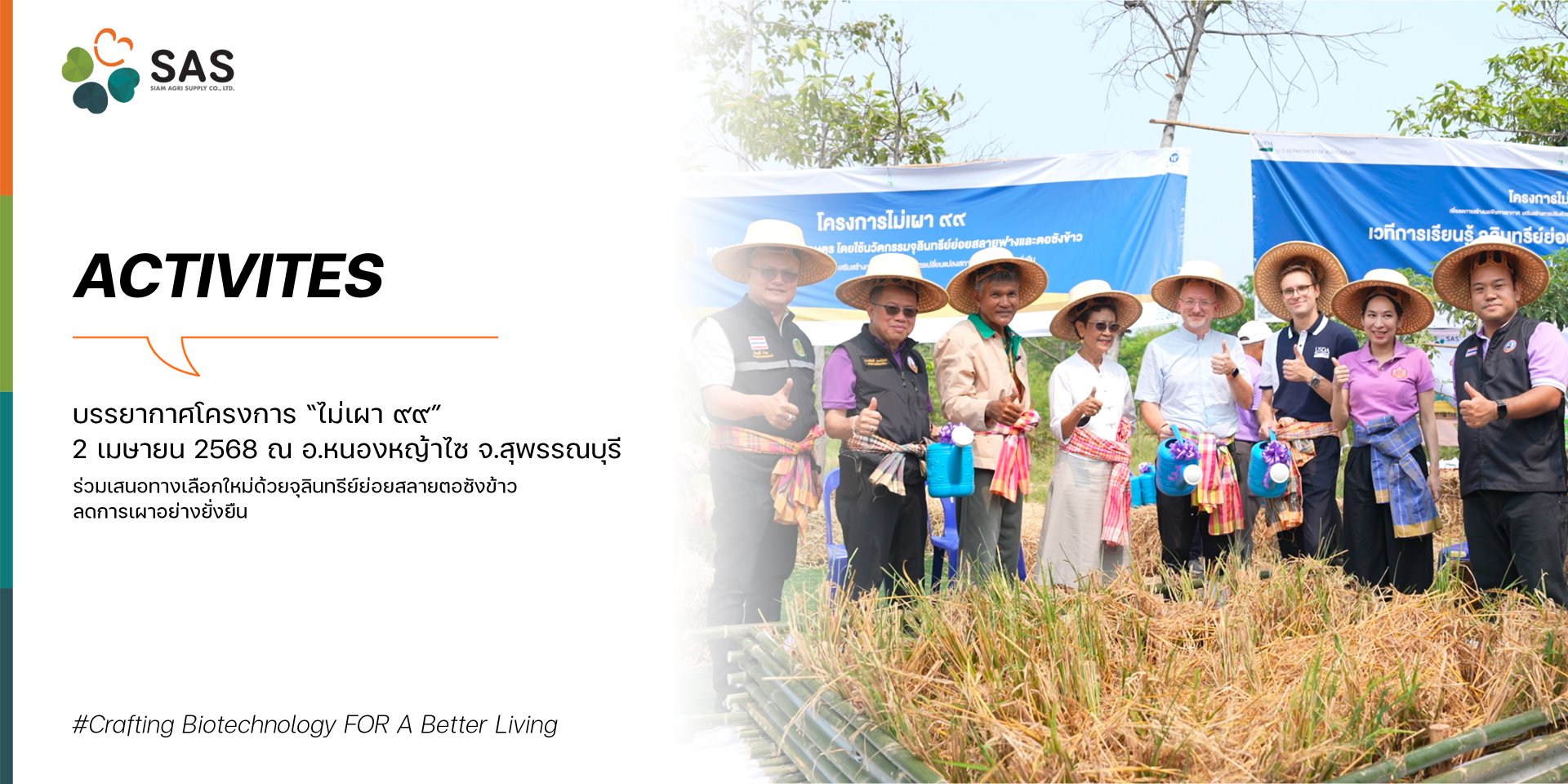SAS Promotes New Alternatives for Farmers in the "No Burn 99" Project at Nong Hya Sai, Suphanburi

On April 2, 2025, the "No Burn 99" project event was organized at the rice field of Mr. Sukorn Sangwan, a community sage and president of the Safe Agriculture Association. Agencies from both the public and private sectors, as well as farmers from the local area, participated enthusiastically. Over 500 attendees gathered to learn about new methods for managing rice straw and stubble without burning, which is a major issue affecting air quality and the environment.
On this occasion, SAS showcased its Soil Digest product, an organic soil conditioner with highly effective microorganisms for breaking down stubble, as a sustainable alternative for Thai farmers. Soil Digest helps accelerate the decomposition of straw and stubble, making it easier to incorporate into the soil, increases organic matter in the soil, and reduces the need for chemical fertilizers.
Throughout the day, many farmers showed interest, inquiring and exchanging experiences regarding the use of the product, which received an enthusiastic responseespecially from farmers who had previously faced recurring issues with burning stubble and were looking for ways to reduce costs while caring for the environment simultaneously.
The event was also honored by the presence of prominent figures in the agricultural sector, including:
- Mr. Chakrit Inna, Director of the Land Development Office Region 1
- Mr. Sukorn Sangwan, Soil Doctor Volunteer from Suphanburi Province
- Ms. Uirarat Meepom, Chair of the Rice Cluster, Bang Plama District, Suphanburi Province
- Mr. Tong Pool Luangkrai, Organic Rice Farmer from Phetchaburi Province
This participation reflects SASs role in supporting the Thai agricultural sector to adapt and respond to environmental challenges through the effective use of microorganisms and organic substances. The "No Burn 99" project represents another significant step in creating collaborative momentum from all sectors to develop sustainable production methods and reduce the impact of open burning in a tangible way.
























